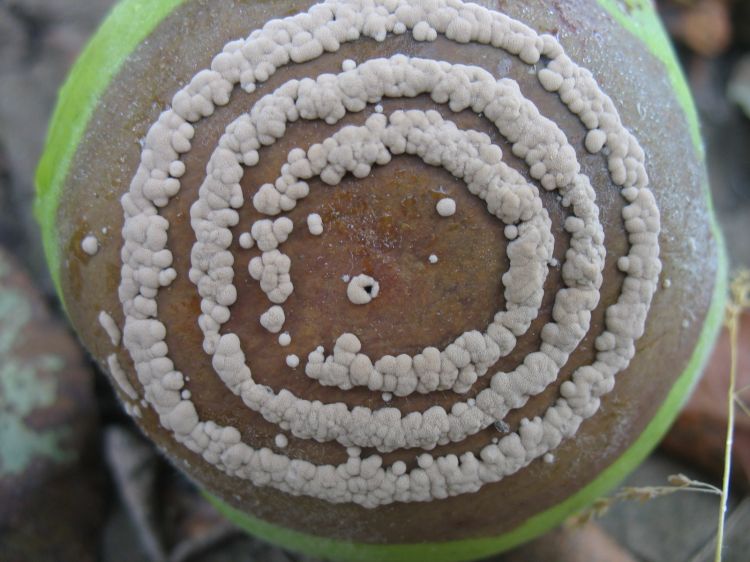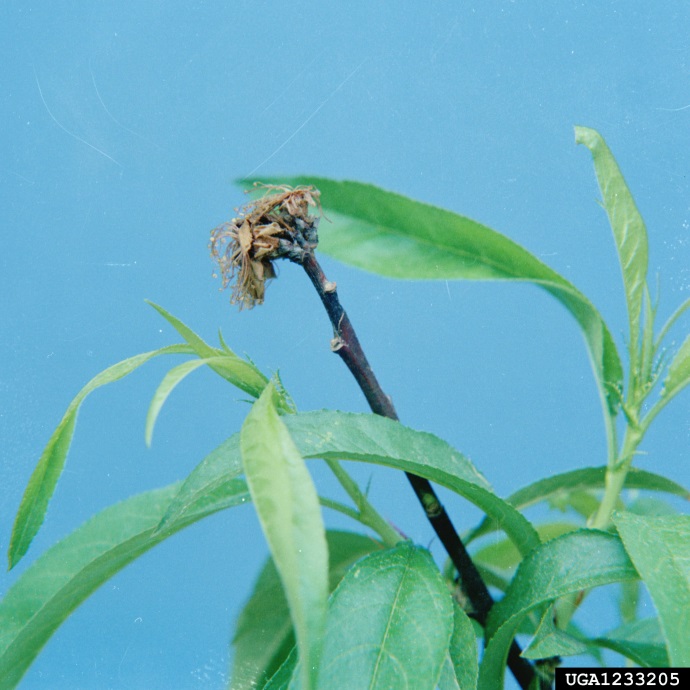
Brown rot
| Primefact number | Edition | Published | Author |
|---|---|---|---|
| 1230 | Third | Dec 2017 | Plant Biosecurity and Product Integrity |


Brown rot (Monilinia fructigena) is an exotic plant pest not present in Australia. This disease is a serious threat to Australia’s apple, pear, cherry, blueberry and stonefruit industries.
Notifiable status
Brown rot (Monilinia fructigena) is a notifiable plant disease in NSW.
All notifiable plant pests and diseases must be reported within 1 working day. You can report notifiable plant pests and diseases by one of the following methods:
- Call the Exotic Plant Pest Hotline 1800 084 881
- Email biosecurity@dpi.nsw.gov.au with a clear photo and your contact details
- Complete an online form
A full list of notifiable plant pests and diseases can be found in Schedule 2 of the NSW Biosecurity Act 2015.
Description
Monilinia fructigena is a fungal pathogen of apple, pear, cherry, blueberry and stonefruit. This fungal pathogen has similar symptoms to Monilinia fructicola which causes brown rot in stonefruit.
The most distinctive symptom of M. fructigena is the concentric circles of fungal growth on rotten infected fruit (Figure 1).
Symptoms
Monilinia fructigena causes blossom blight, rot on the fruit and cankers on the stems of all hosts.
Infected blossoms wilt, shrivel and become covered with a greyish mould (Figure 2). Petals may appear light brown or water-soaked, similar to frost injury. Dead blossoms may remain attached to spurs and twigs until harvest and provide a source of spores for the fruit rot phase.
Initial fruit lesions are brown, circular and firm. Eventually the entire fruit decays and turns brown. Fungal growth on the surface of infected fruit are arranged in concentric rings.
Rotted fruit may fall to the ground or dry out on the tree leaving a hard shrivelled mummified fruit.
The outer bark of infected twigs and shoots is discoloured because of the death of the underlying tissues.
Gum may also accumulate on infected tissues. Tufts of grey fungal strands may be produced on the surface of active lesions especially during humid weather.
Lifecycle
Blossom blight in spring is the first stage of infection by brown rot. All parts of the flower are susceptible. Infected tissues turn dark brown in a typical blight appearance. Blighted blossoms do not produce fruit.
The infection can move from flowers onto spurs resulting in wilting of flower clusters.
Stem blights and cankers may develop from blossom infections.
Secondary infection occurs from spores spread by wind and rain to healthy fruit. Insects may also contribute to spread of brown rot spores.
Infection of fruitlets during or shortly after flowering may result in latent infections that often become active again just before or after harvest.
The fungus overwinters in mummified fruit on the ground or in the tree and in twig cankers.
Hosts
A number of important commercial crops are host to brown rot, including apple, apricot, blueberry, cherry, fig, peach, pear, persimmon, plum, quince and strawberry.
Spread
Localised spread of brown rot occurs with fungal spores carried by wind or rain splash.
Long distance transport of brown rot is most likely to occur with the movement of infected plant material or fruit.
Distribution
Monilinia fructigena is found throughout Europe, the Middle East, India and North Africa.
Actions to minimise risks
Put in place biosecurity best practice actions to prevent entry, establishment and spread of pests and disease:
- practice “Come clean, Go clean”
- ensure all staff and visitors are instructed in and adhere to your business management hygiene requirements
- source propagation material of a known high health status from reputable suppliers
- keep records

